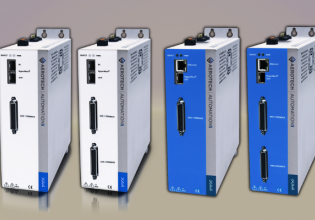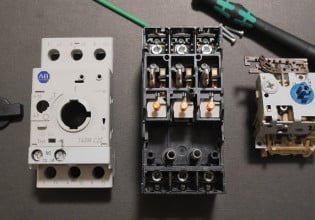New OnLogic Edge Server Promises to Convert Raw Data into Real Value
OnLogic has recently released a new edge server built on Intel’s 13th-gen i-series processors, ready to harness the processing power of technology for increased power and efficiency on the shop floor.
Edge Server From OnLogic
In simple terms, an edge server is a server-class computer that processes information at an edge location, the definition of which can vary depending on use and process. An edge server is usually located on-premises for industrial automation and is used for processing data from industrial equipment. Some edge servers collect data from equipment and pass that data to cloud servers, which are computers in remote locations and are accessed via the Internet. Recently, OnLogic released a new industrial edge server called the Axial AC101 Edge Server.
The new Axial AC101 Edge Server was on display at Automate 2023 in Detroit.
Axial AC101 Edge Server
Server-class computers are built differently than a familiar home PC. An edge server is built with memory and processing power in mind versus a balance of processing, memory, and graphics. The AC101 is a 1U chassis rackmount server and is built with Intel’s 13th gen family of core processors. The server is customizable for the type of processor, amount of memory, hard disk storage, and operating system. The AC101 supports DDR5 memory, M.2 primary storage with optional SATA storage, and up to 750W dual power supply for European or North American markets.
Along with using server-grade components, the AC101 also has a license-fee-free interface to the baseboard management controller (BMC). This allows end users enterprise-level monitoring of uptime and server performance. The BMC can be accessed through a dedicated ethernet port which also allows for ad hoc troubleshooting and monitoring. Just like other enterprise-level servers, the AC101 has dual redundancy for the power supplies and network ports with two 1GbE LAN ports and two 10GbE LAN ports. The base board contains one full-height, full-length PCIe port that is capable of operating graphic cards up to 150 watts.

The AC101 Edge server is designed in a rack-mounted case. Image used courtesy of OnLogic
IIoT And Edge Servers
A major component of IIoT and the digital transformation process is the collection of data from equipment, which is sometimes done with the use of IIoT gateways or IIoT-ready devices. These devices have their own connection to the internet and cloud servers. Special protocols like MQTT are used to transmit data to the cloud servers. Each device could transmit thousands of messages a shift depending on the configuration, and most cloud servers or MQTT services charge a fee per message, based on message size.
This style of messaging and remote data storage could cost thousands of dollars per month. Thankfully there is another solution, the edge server. Since most industrial automation equipment has a PLC or controller of some sort, and all the sensors on the machine will be tied back to the controller, it makes sense to send that data to an edge server. Once the server has the data, it can be processed, analyzed, and archived, and then optionally sent off to a cloud server in one transaction.
While this architecture would save money in the long run with lower messaging and cloud fees, there is a much higher upfront cost for a server than for a simple IoT gateway. This style of data collection then is designed for larger-scale applications like entire shop floor operations, and not for small single-use devices such as data collection on a drone.

Image used courtesy of OnLogic
Application
Today’s industrial equipment produces a lot of data not only of the equipment but also of the part. An edge server such as the AC101 from OnLogic could provide the necessary data storage for machine efficiency and/or part data. Because the AC101 has an enterprise-level server form factor, the AC101 could live in the same rack as the company's IT infrastructure and still communicate with the equipment on the factory floor.






